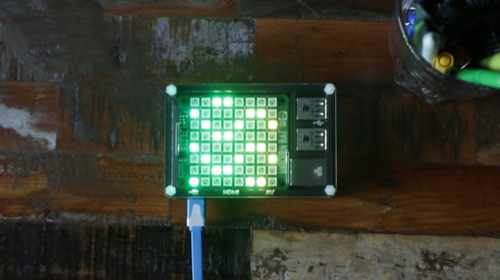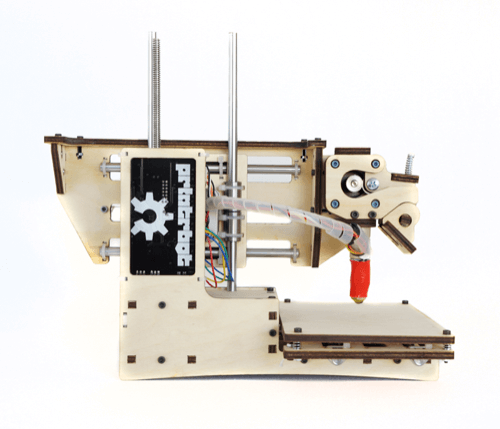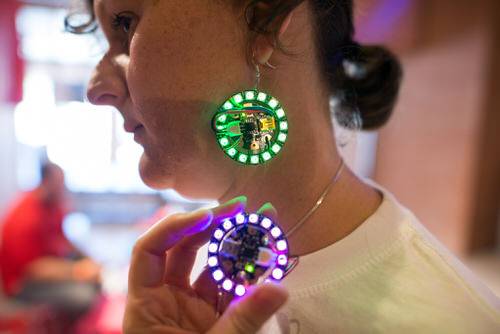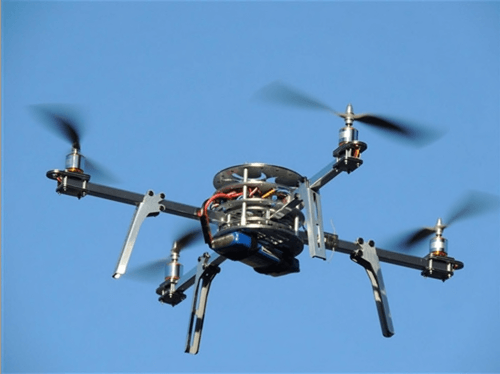Makers and DIY hardware hackers know better than anyone that technology is most awesome when you know how to use it.
See also:
- Smartphones: ReadWrite’s 2014 Holiday Gift Guide
- Smart Home Gadgets: ReadWrite’s 2014 Holiday Gift Guide
- Smartwatches And Other Wearables: ReadWrite’s 2014 Holiday Gift Guide
- TV Streaming Gadgets: ReadWrite’s 2014 Holiday Gift Guide
This year, we’ve made a list of toys for any kind of maker, whether they specialize in drones, 3D printing, or Raspberry Pi. Give the gift of education and creativity this year with one of these awesome kits for doing just about any tech project yourself.
Hardware Hacking

Our pick: Pimoroni Unicorn HAT, $38
We saw two new Raspberry Pi models in 2014, the B+ and A+, and dozens of accessory creators have already built some awesome add-ons. We loved Pimoroni’s Pibow rainbow case for the Raspberry Pi, (you can see it in some of our tutorials earlier this year). This rainbow HAT, short for “Hardware Attached on Top,” seriously ups the ante.
Equipped with an 8×8 matrix of 64 RGB LEDs, the Unicorn HAT offers a vast number of visual programming possibilities. You can, for instance, use Python to write a program that instructs your Pi to blink the lights in myriad patterns of your own design. For more options, you can “fork” Pimoroni’s GitHub repo—that is, modify its code for your own purposes. We’ve embedded a company video, because you have got to see this in action:
Runners-up:
Build A Robot

Our pick: Lego Mindstorms, $350
Lego has certainly evolved quite a lot from those colorful building blocks of your childhood. It has offered programmable bricks since 1998, and its latest offering, the EV3, is its most sophisticated yet. Sure, $350 seems like a lot to spend on a kids’ toy—a lot, that is, until you realize that it’s really a learn-to-program tool for all ages.
Mindstorms comes with an “intelligent brick” that serves as the brain to anything you’d want to program or build with the kit. It’s possible to build all kinds of robots with Lego bricks; the kit comes with instructions for building up five different robot models. The latest version also allows for Bluetooth control from your mobile devices.
Runners-up:
3D Printer

Our pick: Printrbot Simple, $349
This is the least expensive 3D printer on the market (which still isn’t saying very much), but it doesn’t sacrifice quality for affordability. This 3D printer offers high resolution printing for small household items about the size of chess pieces, bottle openers, or belt buckles.
Since you operate it through a USB connection, there aren’t any controls on the printer itself. Instead, you program the item you want to make into the Printrbot Simple software, which runs on your PC, and let it go from there. It isn’t professional grade and can’t print anything as large as an iPhone case, but it’s an efficient, functional, and fun introduction to 3D printing for hobbyists.
Runners-up:
Handmade Wearables

Our pick: Adafruit Gemma Starter Pack, $30
From DIY electronics superstore Adafruit comes Gemma, the thinnest and tiniest wearable platform board—that is, a computer so small you can sew into your clothes. It’s an ultra-low power microcontroller that will manage your soft circuits without making your clothes or other fabric projects uncomfortably hot.
Adafruit has done a number of example projects using Gemma as the central hub, including LED galaxy makeup perfect for costume parties, rainbow hoop earrings, and a light up belt buckle, for starters. This kit comes with LED neopixels and conductive thread, so you can bring your hardware hacking projects to a fabric format and have Gemma be the brain.
Runners-up:
DIY Drone

Our pick: AeroQuad Cyclone ARF Kit, $535
Having a drone is one thing. But having a drone you’ve built completely from scratch to your exact specifications is something altogether more special. The AeroQuad is a powerful Arduino-based drone that you can build yourself.
The AeroQuad Cyclone kit isn’t cheap, but it comes with everything you need to build a functioning multi-rotor copter that you can program for aerial photography, recreational reconnaissance, and more. AeroQuad is also completely open source, so you can fork the drone’s software on GitHub to modify and contribute to its code—and have as much control over the software as the hardware.
Runners Up:
Photos via Pimoroni, LEGO, PrintrBot, SparkFun Electronics, and AeroQuad










